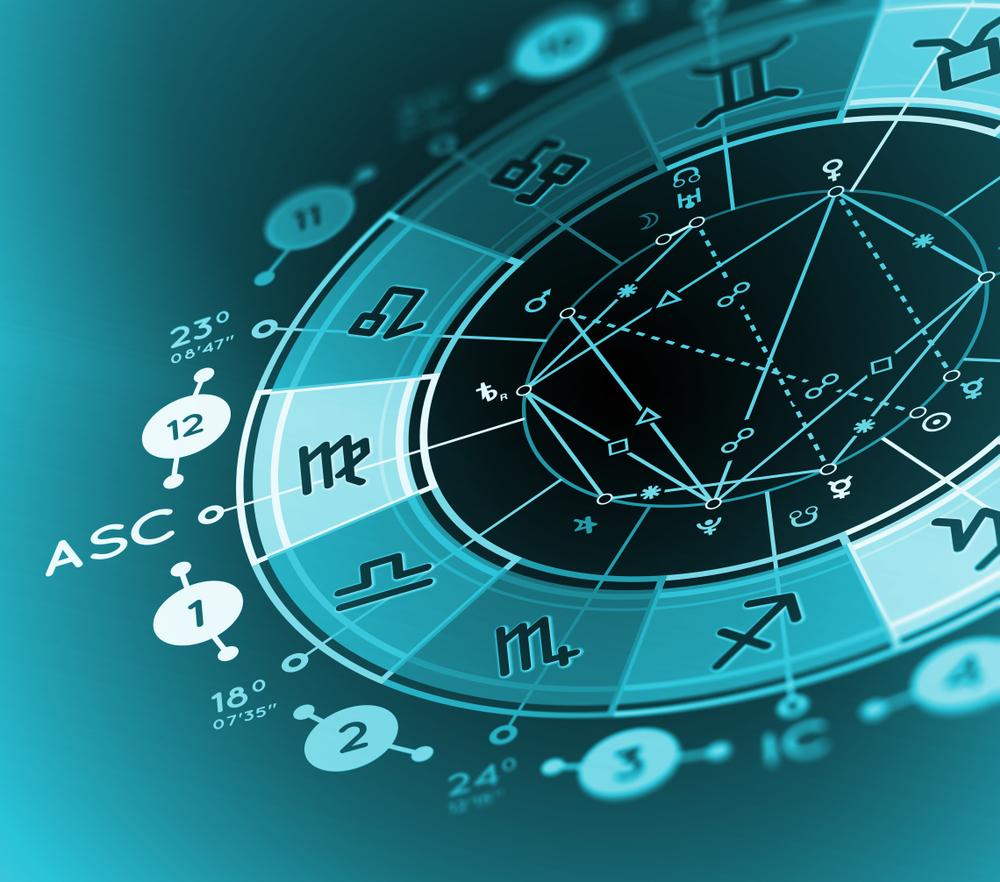
As human beings, we’re fascinated by the interconnectedness of our world. Television shows like Touch and Sense8 explore random things that are somehow linked together. When we scratch the surface, we may find startling truths about these connections. Aspects are one example of how this works in astrology. With angles and shapes, astrologers interpret how cosmic energies can influence each other.
The Easy Way or the Hard Way
Birth charts plot celestial bodies’ positions inside a 360-degree circle. Naturally, these bodies can form angles and shapes with each other. Astrologers call these angles and shapes aspects. Astrology can get pretty detailed, so it’s no surprise that there are nearly two dozen aspects. Most astrologers work with the major five: conjunctions, trines, sextiles, oppositions, and squares.
Bustle astrologer Nina Kahn explains that aspects fall into two different groups: easy and hard. Trines and sextiles are easy aspects because their energies blend in harmonious ways. Oppositions and squares are hard aspects since their planets’ influences tend to clash or struggle. Conjunctions are usually classified as easy aspects, but they don’t strictly belong in either category. Kahn adds that celestial energies can make a conjunction either easy or hard.
How Conjunctions Work
Conjunctions form when two planets are in the same sign, amplifying both energies. To understand how this can play out, you must consider what the planets involved represent. For instance, a Mercury-Jupiter conjunction is usually a good thing. Mercury governs communication and intellect, while Jupiter’s domain includes wisdom and growth. But what if Mercury conjuncts Saturn? It might not be such a bad thing. Saturn’s limiting influence can feel a bit stifling, but it could also structure and discipline communication.
Trines and Sextiles
As two easy aspects, trines and sextiles tend to have positive outcomes. Trines form when two planets make a 120-degree angle, and both planets are in a sign with the same element. A Sun-Mars trine is a great example. The Sun rules Leo, Mars rules Aries, and they’re both fire signs. Both bodies’ energies harmonize, with the Sun representing the self and Mars bringing drive and courage. This trine in a natal chart could produce a self-confident person with a healthy competitive nature.
Sextiles form a 60-degree angle between two planets. Kahn clarifies that they end up in signs with compatible elements, like fire with air or earth with water. However, they don’t produce intense outcomes like trines or conjunctions.
Squares and Oppositions
Squares and oppositions are the hardest aspects in astrology. Two planets form a square when they’re 90 degrees and four signs apart. AstroStyle describes a square’s energy as full of tension because the celestial energies are in direct conflict with each other. One extreme example is a Sun-Moon square – perhaps a Sun in Leo and a Moon in Scorpio. We know that the Sun represents one’s identity, but the Moon governs emotions and the unconscious. Having the two at odds isn’t easy, and a person with this aspect will need to find balance.
Oppositions occur when two planets are six signs and 180 degrees apart. That puts them on opposite ends of the zodiac wheel, so the two influences play tug-of-war with each other. Consider a Mercury-Neptune opposition, with Mercury in Virgo and Neptune in Pisces. Mercury’s analytical bent is at direct odds with the super-imaginative Piscean Neptune. AstroStyle mentions that an opposition can bring tension, but it may also force two contrary energies to work together.
The Art of Interpretation
Humans are adept at finding patterns when we look long and hard enough. Astrological aspects prove this point abundantly, using shapes and angles to elicit meaning. Some energies harmonize like a well-written song, but others behave like paradoxes. Either way, aspects can teach us about our world and human nature itself.

